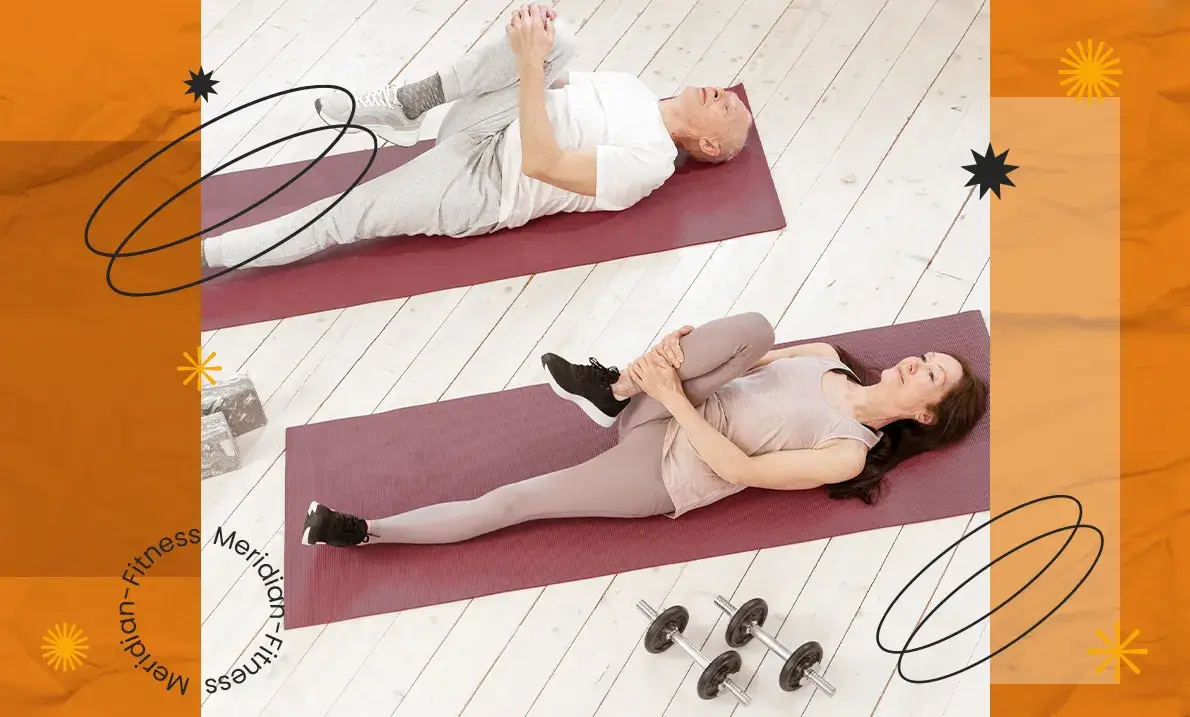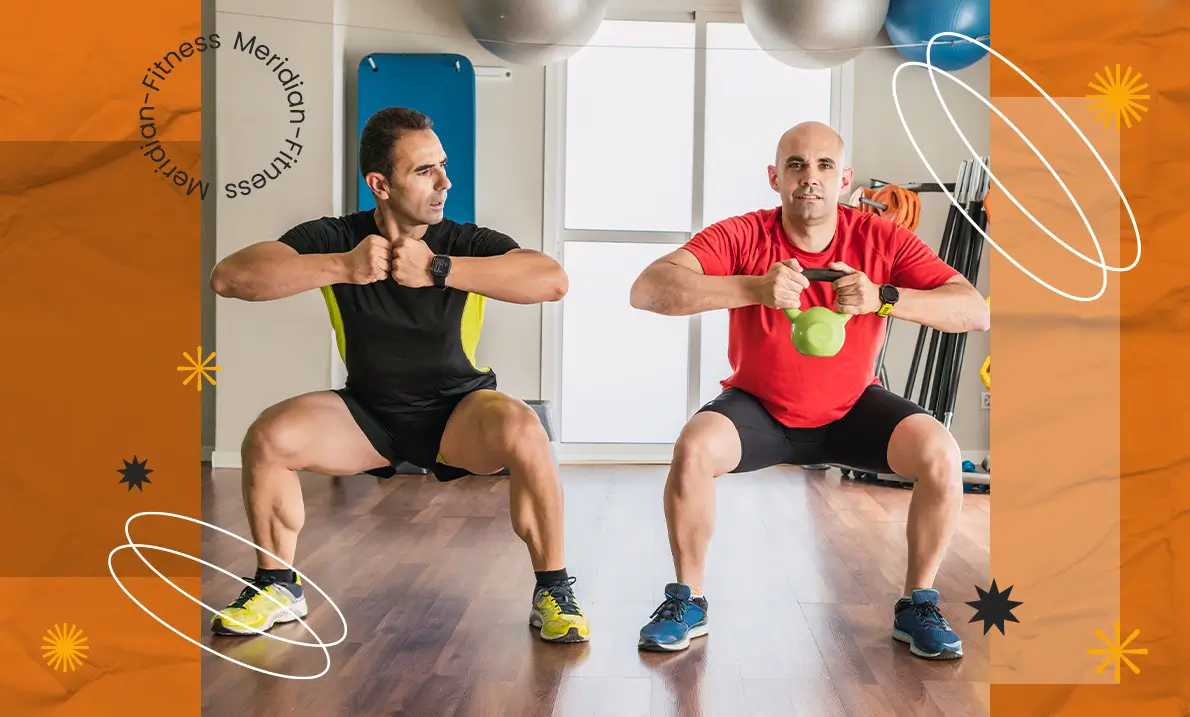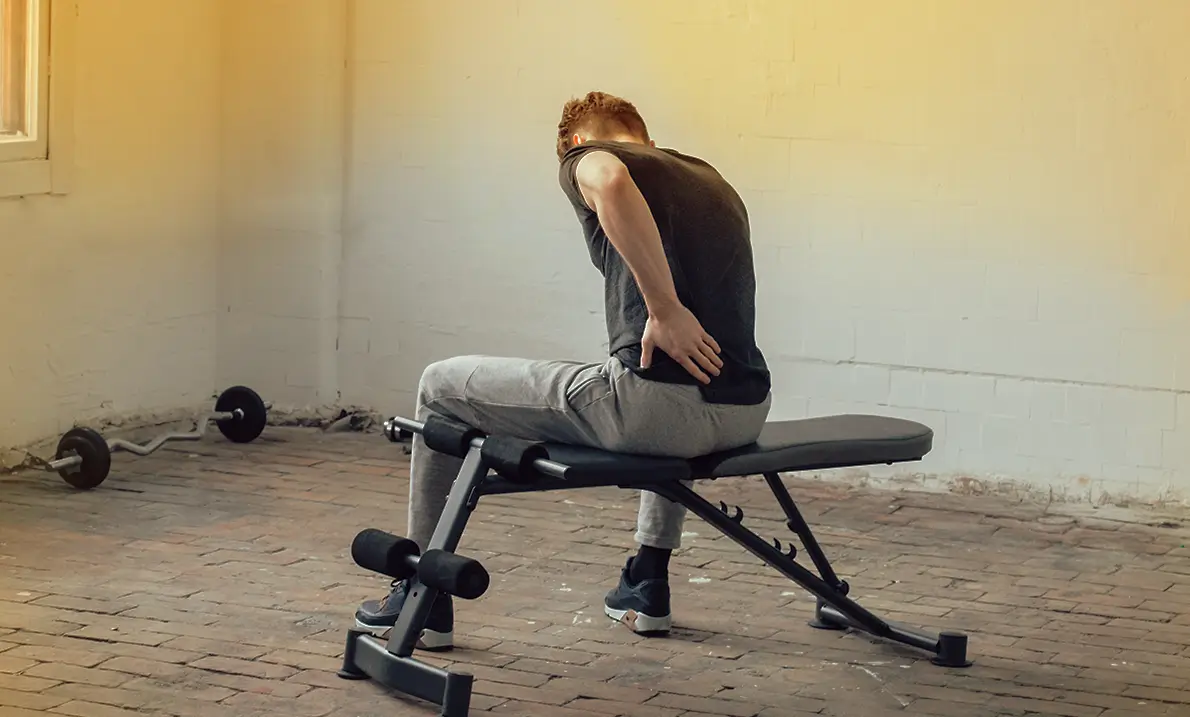Sciatica is a condition that affects the sciatic nerve, which runs from the lower back down through the hips and buttocks and into the legs. It is typically caused by a herniated disc, spinal stenosis, or other issues that compress the nerve, leading to pain, tingling, numbness, and weakness. While the pain can be debilitating, certain gym exercises can help relieve sciatica, strengthen the muscles supporting the spine, and promote flexibility. This comprehensive guide will take you step-by-step through the process of managing sciatica pain with gym exercises.
Understanding Sciatica and How Exercise Helps
What is Sciatica?
Sciatica occurs when the sciatic nerve, the largest nerve in the body, is compressed or irritated. The pain typically originates in the lower back or buttocks and radiates down one leg. This pain can be sharp, burning, or feel like an electric shock, and it can be accompanied by numbness, weakness, and tingling in the affected leg.
Common causes of sciatica include:
- Herniated discs: When a disc bulges out between the vertebrae, it may press on the nerve.
- Spinal stenosis: Narrowing of the spinal canal compresses the nerve roots.
- Piriformis syndrome: The piriformis muscle in the buttocks compresses the sciatic nerve.
- Degenerative disc disease: Age-related wear and tear of the discs in the spine.
- Spondylolisthesis: A condition where one vertebra slips over another.
Why Exercise Helps Sciatica Relief?
Exercise plays a crucial role in managing sciatica because it can:
- Improve posture: Proper posture reduces pressure on the spine and sciatic nerve.
- Increase flexibility: Stretching can relieve tight muscles that may be compressing the nerve.
- Strengthen muscles: Building strength in the core, glutes, and legs helps stabilize the spine and prevents further injury.
- Stimulate circulation: Blood flow helps reduce inflammation around the nerve.
- Reduce muscle spasms: Relaxing tense muscles around the sciatic nerve can alleviate pain.
Preparing for Sciatica Exercises
Before diving into exercises for sciatica relief, it’s important to take some preparatory steps to ensure safety and maximize effectiveness.
Consult a Healthcare Professional
If you haven’t already, consult a doctor or physiotherapist before beginning any exercise program. They can determine the underlying cause of your sciatica, suggest appropriate exercises, and help you avoid exercises that could aggravate the condition.
Start Slowly
Begin with low-intensity exercises that focus on stretching and gentle movement. Avoid high-impact exercises involving twisting motions or heavy lifting until your pain has significantly decreased.
Warm-Up and Cool Down
Warming up before exercising prepares the muscles for activity and prevents injury. A gentle warm-up can include activities like walking on a treadmill or doing dynamic stretches like leg swings or arm circles.
A cool-down after exercising helps reduce muscle tightness and improve flexibility. This can include gentle stretches, breathing exercises, and relaxation techniques.
Proper Form and Posture
Maintaining good posture during exercises is essential to avoid straining the back and aggravating sciatica. Focus on:
- Keeping the spine neutral.
- Engaging the core muscles to support the lower back.
- Avoiding twisting or jerking motions.
Stretching Exercises for Sciatica Relief
Stretching can help to release muscle tension around the sciatic nerve, improving flexibility and relieving pain. Below are detailed stretches that are highly effective in alleviating sciatica symptoms.
1. Hamstring Stretch
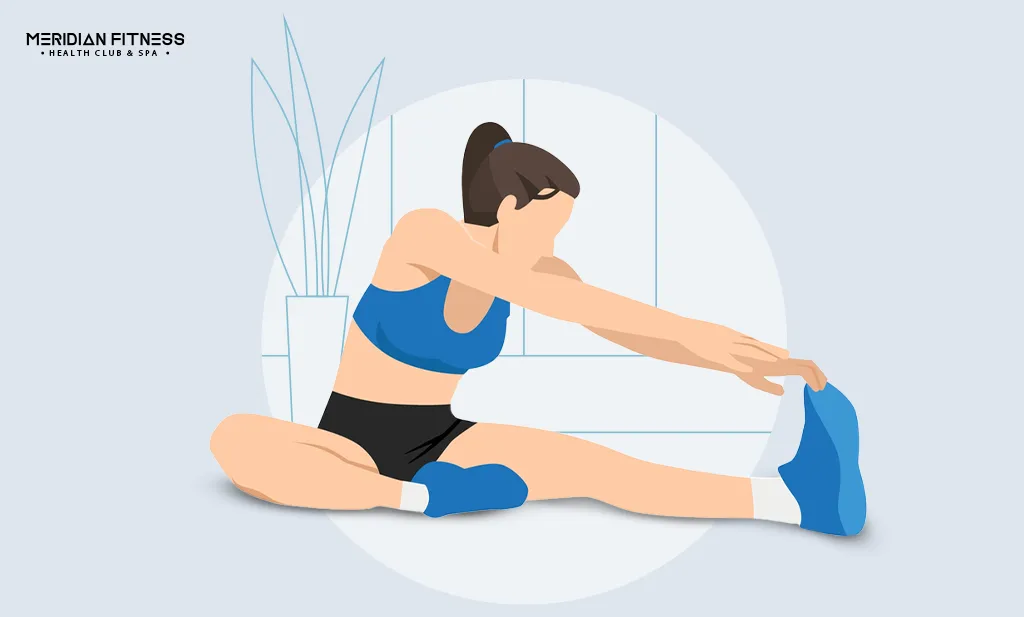
Tight hamstrings can contribute to sciatica pain by increasing pressure on the lower back and hips. Stretching the hamstrings can help reduce tension in the lower body.
How to Perform:
- Sit on the floor with one leg extended straight in front of you and the other bent.
- Gently lean forward from your hips (not your waist) to reach towards the toes of the extended leg.
- Hold the stretch for 20-30 seconds, breathing deeply. Ensure you feel a gentle stretch, not pain.
- Repeat on the other side.
Benefits: This stretch targets the back of the thighs and can help relieve lower back tension.
2. Piriformis Stretch
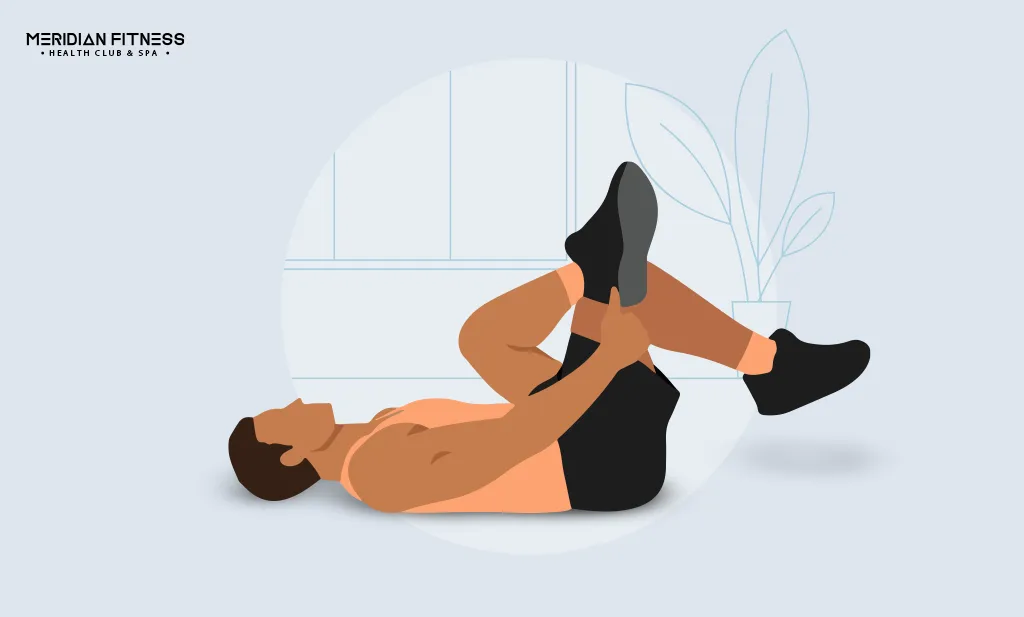
The piriformis muscle, located deep in the glutes, can sometimes compress the sciatic nerve. Stretching this muscle helps reduce sciatic pain and discomfort.
How to Perform:
- Lie on your back with both knees bent and feet flat on the floor.
- Cross your right ankle over your left knee, forming a figure 4.
- Gently pull your left thigh towards your chest until you feel a stretch in the right glute.
- Hold for 20-30 seconds, then switch sides.
Benefits: This stretch targets the piriformis muscle, which may be contributing to sciatica.
3. Child’s Pose
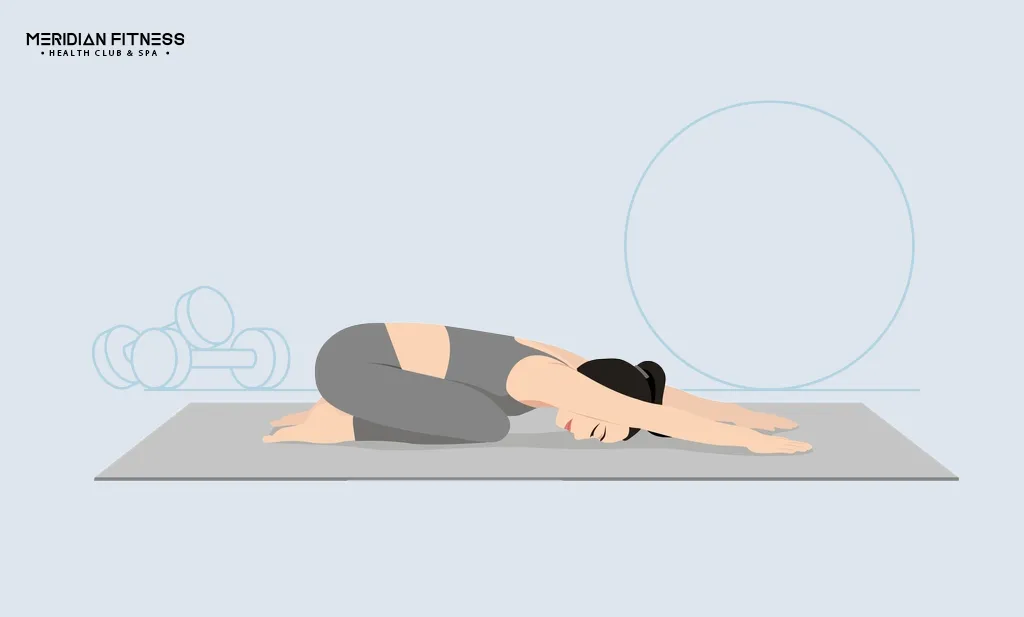
This yoga pose stretches the lower back, hips, and thighs while promoting relaxation.
How to Perform:
- Start on all fours, with your hands aligned under your shoulders and knees under your hips.
- Slowly lower your hips towards your heels while stretching your arms forward on the floor.
- Keep your chest as close to the floor as possible, relaxing your forehead to the ground.
- Hold for 30 seconds to 1 minute, breathing deeply.
Benefits: Child’s pose stretches the lower back and can help alleviate tension in the sciatic nerve.
4. Cat-Cow Stretch
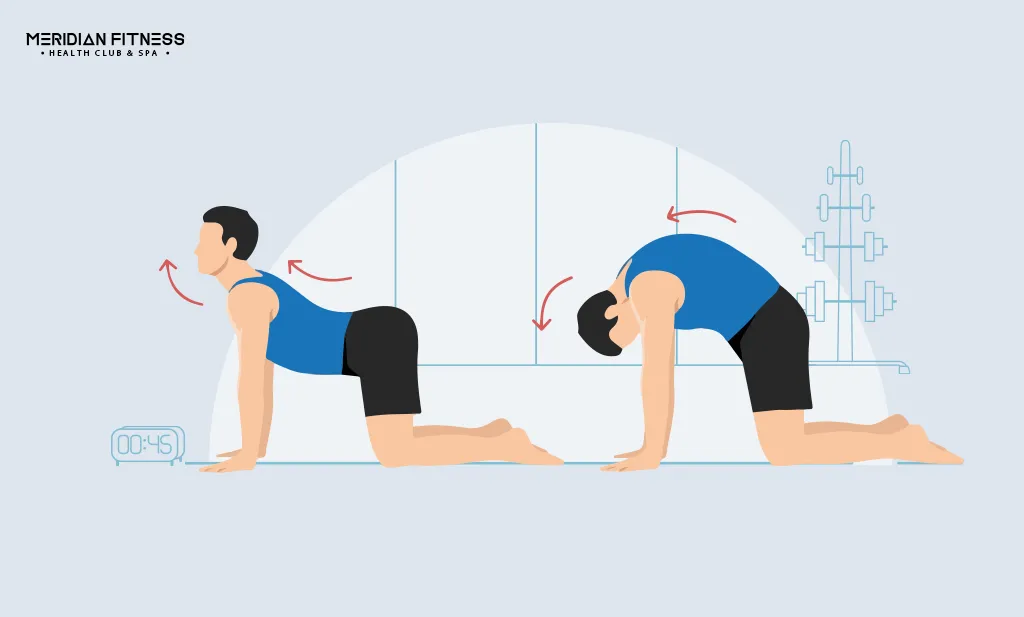
This dynamic yoga stretch promotes spinal flexibility and reduces tension in the back.
How to Perform:
- Begin on all fours with a flat back.
- Inhale as you arch your back, lifting your head and tailbone toward the ceiling (cow pose).
- Exhale as you round your back, tucking your chin toward your chest and drawing your tailbone under (cat pose).
- Repeat for 1-2 minutes.
Benefits: The Cat-Cow stretch helps improve spine mobility and alleviates sciatica discomfort.
Strengthening Exercises for Sciatica Relief
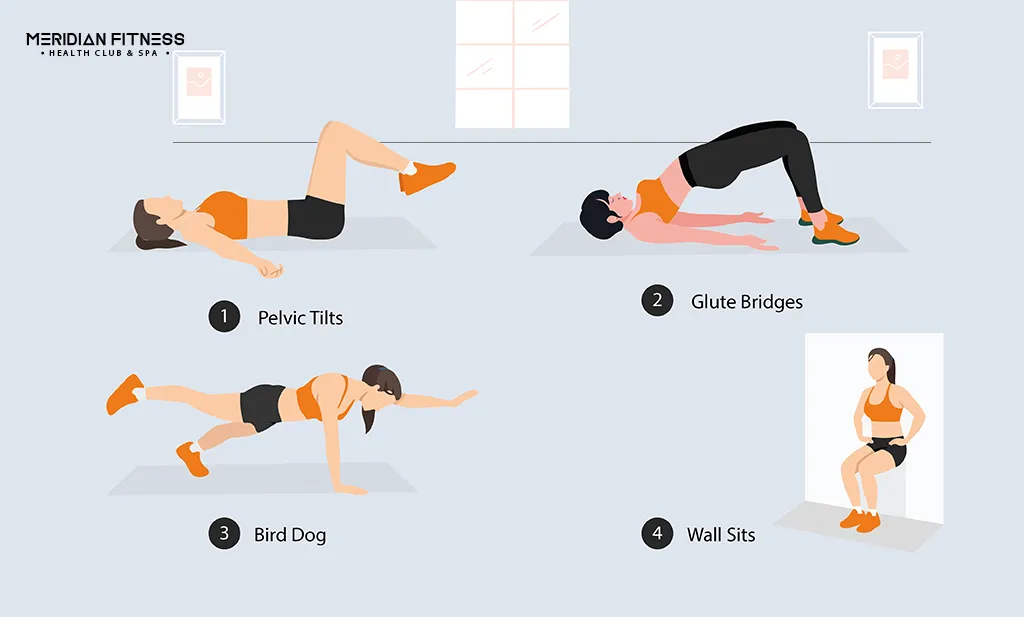
Strengthening the muscles around your lower back, core, and legs provides stability to the spine and can help prevent future sciatica flare-ups.
1. Pelvic Tilts
Pelvic tilts help strengthen the abdominal muscles and lower back, improving core stability and reducing sciatica pain.
How to Perform:
- Lie on your back with knees bent and feet flat on the floor.
- Tighten your abdominal muscles and push your lower back into the floor, tilting your pelvis slightly.
- Hold for 5-10 seconds, then relax. Repeat 10-15 times.
Benefits: This exercise targets the lower back and core, which are essential for supporting the spine.
2. Glute Bridges
Glute bridges strengthen the glutes, lower back, and core, providing essential support for the spine.
How to Perform:
- Lie on your back with knees bent and feet flat on the floor.
- Squeeze your glutes and lift your hips toward the ceiling, ensuring your shoulders, hips, and knees form a straight line.
- Hold at the top for a few seconds, then lower your hips back to the floor.
- Repeat 10-15 times.
Benefits: Glute bridges target the glutes and core, which are critical for stabilizing the pelvis and spine.
3. Bird Dog
This exercise strengthens the core, glutes, and lower back, promoting stability and balance.
How to Perform:
- Begin on all fours with a flat back.
- Extend your right arm forward while simultaneously extending your left leg straight back, keeping your body in a straight line.
- Hold for a few seconds, then return to the starting position.
- Repeat on the other side for 10-12 repetitions.
Benefits: The bird dog exercise strengthens the core and improves balance, which helps prevent future back problems.
4. Wall Sits
Wall sits are a low-impact exercise that targets the lower body and core muscles, improving endurance and stability.
How to Perform:
- Stand with your back against a wall and slowly slide down into a squat position.
- Keep your knees at a 90-degree angle and hold for 20-30 seconds.
- Repeat 3-5 times.
Benefits: Wall sits strengthen the quadriceps, glutes, and core without putting excessive strain on the back.
Low-Impact Aerobic Exercises for Sciatica Relief
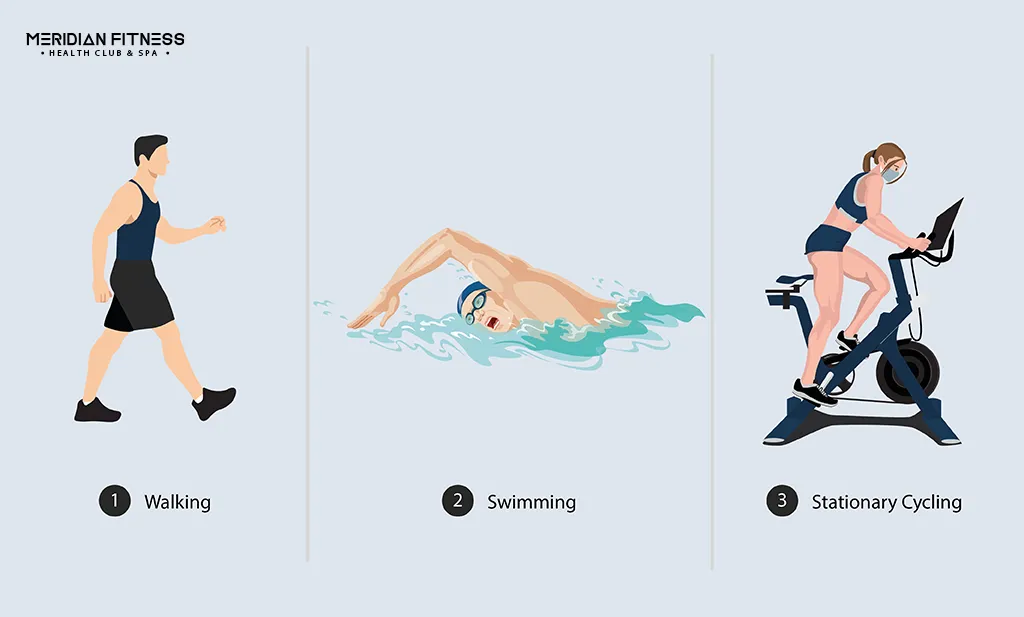
Low-impact aerobic exercises improve circulation, help manage pain, and reduce muscle stiffness. These exercises are easy on the joints and can provide relief from sciatica.
1. Walking
Walking is a simple, effective way to strengthen the legs and lower back muscles while improving flexibility. Aim to walk briskly for 20-30 minutes, starting with shorter walks and gradually increasing the time as you improve.
2. Swimming
Swimming is a great full-body exercise that strengthens muscles while providing buoyancy that alleviates pressure on the spine. Focus on gentle strokes that don’t aggravate pain.
3. Stationary Cycling
Using a stationary bike provides a low-impact cardiovascular workout that strengthens the legs and improves circulation. Start with low resistance and increase the intensity as tolerated.
Lifestyle Tips to Manage Sciatica Pain
In addition to exercise, certain lifestyle habits can help manage and prevent sciatica flare-ups.
Posture and Body Mechanics
Maintaining proper posture while sitting, standing, and walking helps reduce strain on the spine. Keep your shoulders back, avoid slouching, and engage your core for support.
Sleep Position
Sleeping on your side with a pillow between your knees can help relieve pressure on the lower back and sciatic nerve. Alternatively, lying on your back with a pillow under your knees can provide support.
Weight Management
Maintaining a healthy weight reduces the strain on your lower back and can help manage sciatica pain. Even a modest weight loss can relieve pressure on the sciatic nerve if you are overweight.
When to Seek Professional Help
If sciatica pain persists or worsens despite exercise, or if you experience symptoms such as severe leg weakness, numbness, or loss of bowel or bladder control, seek immediate medical attention. A healthcare professional may recommend additional treatments, such as physical therapy, medication, or in some cases, surgery.
Conclusion
Sciatica can be a challenging condition, but with the right combination of stretching, strengthening, and low-impact aerobic exercises, it is possible to manage and relieve the pain. By incorporating these exercises into your routine and following healthy lifestyle habits, you can improve your quality of life and prevent future flare-ups. Always consult with a healthcare professional before starting a new exercise program, and listen to your body to avoid overexertion. With patience and consistency, you can find relief from sciatica and regain your mobility.
